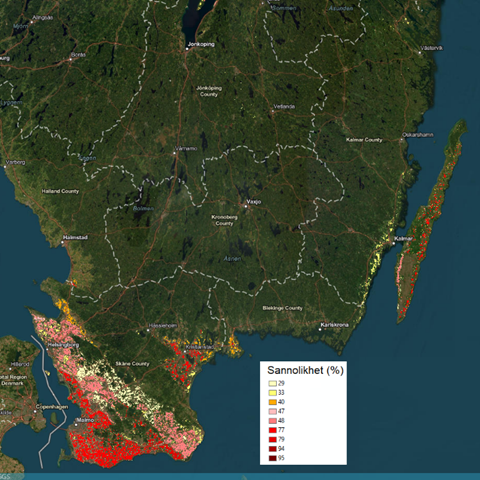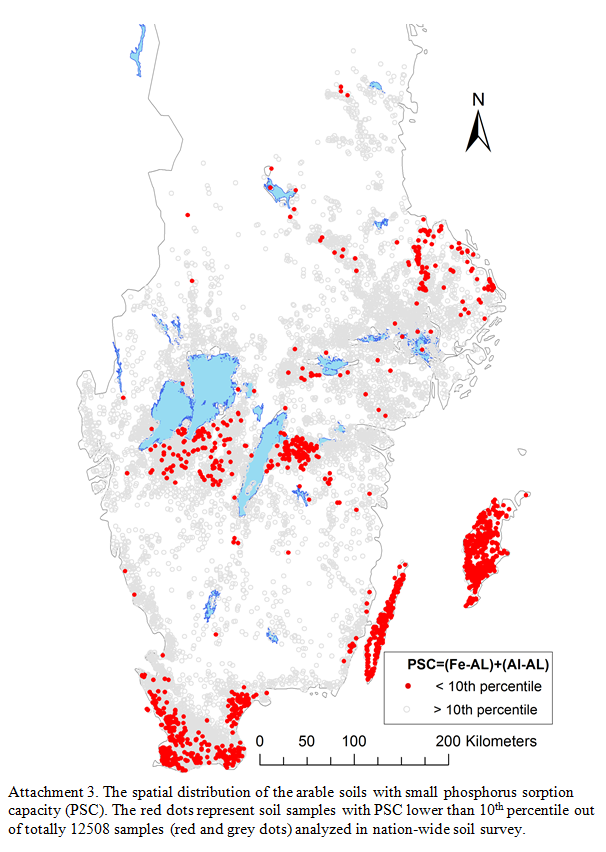The project identified areas sensitive for leaching of dissolved phosphorous.
Results
The project identified areas sensitive for leaching of dissolved phosphorous. As opposed to particulate phosphorous is dissolved phosphorous always directly available for water living organisms. The map shows the probability that a soil sample has a low content of aluminum and thereby is sensitive for losses of dissolved phosphorus.
There is an ArcGIS StoryMap version of the map.
Background
Agriculture is a main contributor of nutrients to water recipients and nutrient losses need to be reduced to meet good ecological status according to EU Water Framework Directive.
Losses of phosphorus (P) occur both in forms of dissolved P (DP) and particulate P (PP). While the bioavailability of PP form varies from 10 to 90 %, the DP is assumed to be readily bioavailable. Results from research projects and monitoring programs show extremely high DP losses from soil with small P sorption capacity (PSC).
Methods
The project was conducted in four steps:
- Using results from nation-wide soil survey in combination with other auxiliary geospatial data and results from environmental monitoring programs, sensitive areas of arable land prone to high DP losses have been identified.
- In the second step we compared different laboratory methods, P fractionation procedures, XANES and P NMR to quantify P speciation and transformations and thereby developed guidelines for farmers and water authorities regarding identification of high-risk soils.
- Additionally, using intact soil columns we studied P leaching losses, as well as the effects of P fertilization on small PSC soils.
- Finally, in the last step we scaled-up our results and developed P leaching risk maps at national scale.
Targeting soils with small PSC will increase cost-efficiency of abatement measures and at the same time identify other areas of arable land which are more resilient and allow intensified agricultural production without threatening water quality.
Read more about the results
News:
Scientific publications:
- Djodjic, F., M. Bieroza & L. Bergström. 2021. Land use, geology and soil properties control nutrient concentrations in headwater streams. Science of The Total Environment, Volume 772, 2021, 145108
- Djodjic F, Bergström L, Schmieder F, Sandström C, Agback P, Hu Y. 2023. Soils potentially vulnerable to phosphorus losses: speciation of inorganic and organic phosphorus and estimation of leaching losses. Nutrient Cycling in Agroecosystems. doi:10.1007/s10705-023-10298-6.

